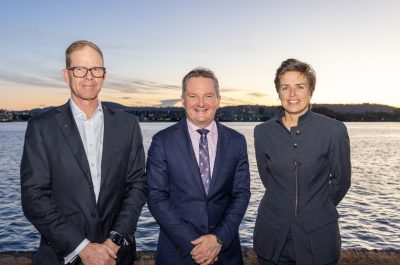Solar visibility – what is it and why is it so critical?
If the flap of a butterfly’s wings can cause a tornado, can the connection of another household solar PV and battery lead to statewide electricity supply issues? The answer is linked to better visibility of the distributed resources across the system and how their inverters will operate in times of stress.
One of the most important principles for energy networks is that the cost of delivering services to manage the growth of renewables does not outweigh the benefits.
These issues and principle are at the heart of the Energy Networks Australia Open Energy Networks Position Paper.
To fully understand these, it is important to consider how distributed energy resources (DER) such as solar and batteries fit within our electricity system.
Visibility of small-scale consumer assets
There is solid consensus that better visibility of DER is a fundamental requirement of a smarter energy system.
‘Visibility’ basically refers to actively monitoring key real-time information regarding what DER assets there are, how much electricity they can generate/store/export and their technical capabilities.
Being able to understand how DER is behaving adds additional information that will support dynamic operation of the distribution network.
This visibility is critical to both the local distribution network service provider (DNSP) and, at an aggregate level, to the Australian Energy Market Operator (AEMO) as it is responsible for power system security. They need to know what amount of power is being exported into the grid and from where – to prevent damaging voltage spikes and other system security challenges. This is the key ‘no regrets’ action recommended in both the recent Open Energy Networks (OpEN) position paper and the OpEN interim report published in July 2019.
The establishment of the national DER register should be a critical input into new forecasting processes to better predict DER behaviour across the system. While it’s clear the local DNSP will benefit from detailed information at the local level, a key question is what information is required by AEMO, particularly to deliver power system security?
In maintaining system security, and planning for contingency events, AEMO requires information on how the fleet of DER, combined with distribution-level constraints, could impact the transmission system. DNSPs are keen to work with AEMO to explore and develop methods to deliver this vital information. However, it is not cost effective nor practical for AEMO to develop mechanisms that give it direct access to DER assets, such as inverters. DNSPs, with greater local knowledge, are best placed to manage and aggregate local network data. This aggregated data can then be shared with AEMO.
To use an analogy, a freeway system operator needs accurate live data on exactly what traffic is coming off and on at each exit and entrance. In the event of a major issue, aggregate information on the capacity of traffic to exit (or enter) the freeway rapidly is also essential. It is not clear that the freeway system operator needs any live data on town and country roads away from the freeway system. That would appear to be more logically – and cost-effectively – a role for local road operators, which would be required to provide aggregated data to the freeway operator about each entry and exit point.
Distribution Market Operator
We explained the concept of a distribution market operator (DMO) in a recent article.
At its simplest level, a DMO would enable DER to access wholesale markets. This would mean customer-generated electricity can be bid into the market. AEMO as the existing wholesale market operator would have a critical role to play in enabling this.
The question is whether the benefits of establishing a formal distribution market now outweigh the costs. The OpEN Position Paper found that for the foreseeable future, customer cost would significantly outweigh benefits.
Energy Networks Australia agrees DER should be able to participate in the wholesale market by providing energy and services. Indeed, the cost savings from avoided infrastructure expenditure by optimising this integration if DER are potentially .
But are there ways of enabling this that can happen today without going down the costly path of creating a new wholesale distribution market?
The virtual power plant (VPP) trial in South Australia is demonstrating one approach to optimising DER that is happening today. In this VPP the DNSP is required to provide constraint information to the VPP operator. The operator, Tesla, then determines the service that can be provided based on those constraints. AEMO’s knowledge sharing report of 19 March 2020 indicates that this trial is effective in providing value to participants, as well as Frequency Control and Ancillary Services (FCAS) and energy to AEMO.
The South Australia VPP and other trials show that the key development required in the short to medium term is DNSPs having visibility of how DER is behaving on the network and where there are constraints to solar exports. We also need governance arrangements that give AEMO the confidence it needs that a bid for the provision of energy and services from DER aggregators to the wholesale market will be delivered.
Future Role of DNSPs
AEMO has made it clear that it does not want the ability to directly control inverters. Instead, this management would occur via directions to DNSPs in a similar way to load shedding. Issues such as load flows and constraints make it essential that DNSPs retain control of the operation of their local networks.
The future will see DNSPs transition to a more active role in managing and monitoring their networks – a shift that is well underway.
Distribution networks are already utilising consumer assets to support network operation through the provision of demand-side response (both active and passive) – for example the Energex Positive Payback Program. Depending on the circumstances the network has direct control of customer equipment like pool pumps or air-conditioners or customers are incentivised to manage their demand. In all instances, participants are rewarded for providing these services with a range of tariffs or other inducements.
DNSPs will increasingly leverage their understanding of their network’s capabilities to help AEMO support system security. Indeed, DNSPs already make the decisions on how AEMO’s load sheading directions are delivered based on local knowledge. DNSPs and AEMO need to ensure that there is a mutual understanding of the state of each network and the requirements to maintain stability. This requires closer cooperation and coordination between the market operator and the DNSPs. Examples of how this cooperation can be developed and strengthened can be found in many places globally. In all overseas examples the market operator does not have an operational role in the distribution system, other than issuing emergency directions during a contingency event.
Access to the market must be cost effective
A key pillar of the OpEN Position Paper is that development of a comprehensive distribution energy market dispatch engine is not required at this stage. Indeed, any market introduced before there is a demonstrated need would require manufactured profit opportunities to entice market participation. This would result in increased prices for customers.
Customers should not pay for approaches that do not deliver clear net benefits. DNSPs are bound by regulations to consider the long-term interests of consumers and, viewed through this lens, a rapid move to distribution level markets is not warranted.
DNSPs do need to understand their constraints, the technical requirements of the services to relieve those constraints and the ability to signal their requirements to providers. In other jurisdictions, the ability to signal and use requirements is being undertaken by a mix of parties, including innovative new businesses and retailers.
It is important AEMO continues to optimise and dispatch at the transmission level. At the distribution level, DNSPs will work with aggregators and new third parties to facilitate the development of local constraint platforms – indeed these platforms are already under development. In the future, there may be many parties who can deliver services to manage local constraints.
What next?
It is critical that we urgently progress the ‘least regrets’ actions first recommended the Interim OpEN report and re-emphasised in the recent OpEN paper. Top of that list is investing in visibility and monitoring. These key enablers can be delivered in a proportionate and scalable manner and are not dependent on the existence of distribution markets.
It’s important we take an approach that minimises the risk to customers of investing in functionalities that may not deliver overall net benefits. That must be a key consideration as we transition to a smarter energy system.

